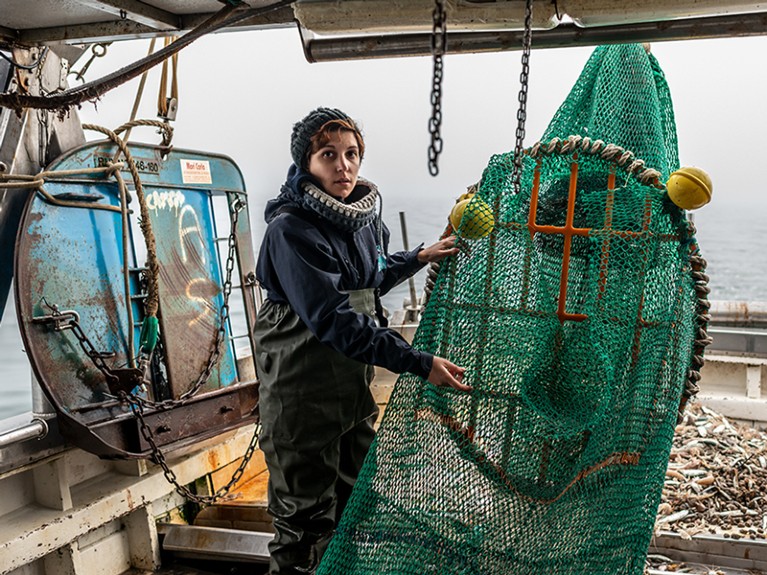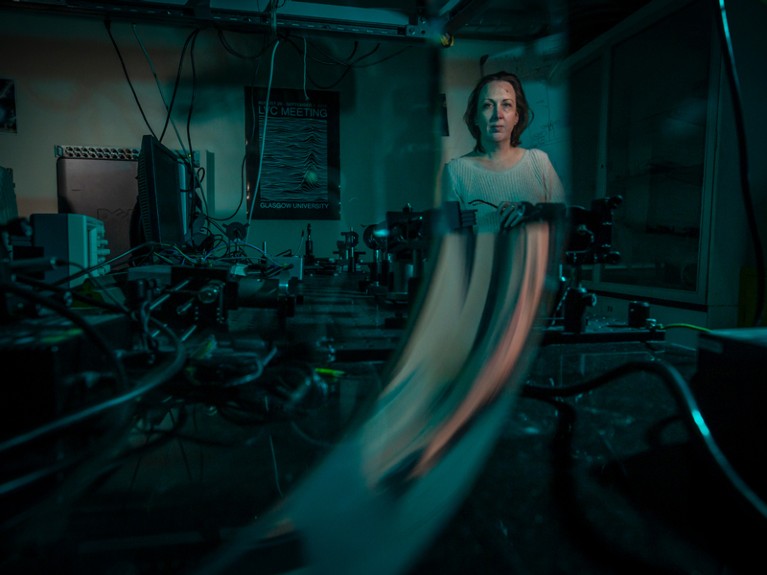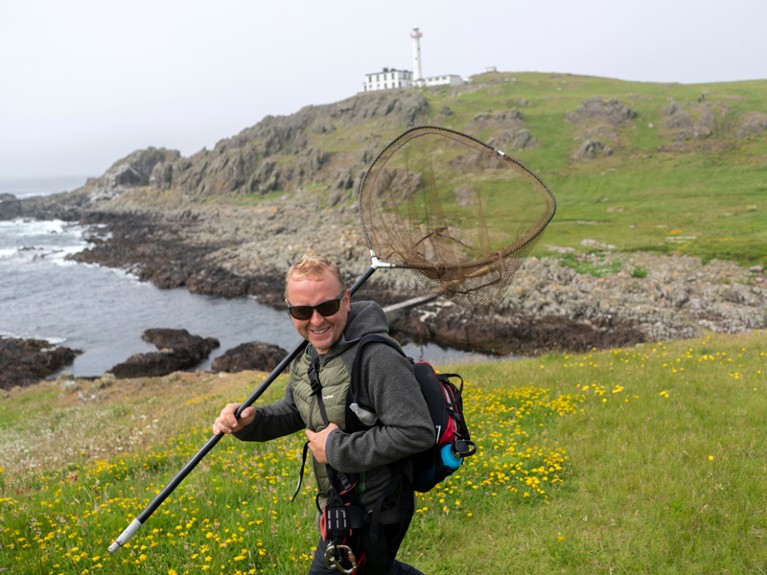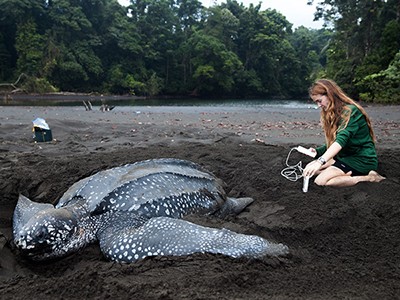[ad_1]
Using good imagery could be a boon to a researcher’s profession: a compelling picture may find yourself on a journal cowl, illustrate a presentation or brighten up a laboratory assembly. However many scientists don’t obtain coaching on what makes a ‘good’ {photograph} — or one of the best methods for taking one.
Enter the scientist at work competition
As Nature’s 2022 annual pictures competitors opens, two skilled photographers who contribute commonly to the journal’s weekly workplace photo essay Where I Work provide their recommendation on learn how to take a shocking {photograph} (see ‘Seize the second’). Nature’s managing media editor Lizzy Brown additionally describes how she and her colleagues select photos to be featured within the journal.
Have already got an awesome {photograph} to be thought-about within the competitors? Enter at go.nature.com/3rfky. The winners will probably be introduced in a December concern of Nature.
ELISABETTA ZAVOLI: Use the sunshine as your paint set
Documentary photographer primarily based between Rimini and Milan in Italy, who focuses on investigating environmental points and their relationships with international financial and social elements.
I’ve an environmental-science background, however lab analysis wasn’t my calling — so I adopted my ardour and have become a photographer. Since 2009, I’ve worked on long-term photography projects and assignments for nationwide and worldwide magazines.
As a documentary photographer, I’m all the time looking out for well timed and attention-grabbing topics, and I analysis and develop them over months, and even years. I wanted to discover ways to juggle private and paid initiatives, and I have to be able to journey at a second’s discover when an editor asks me.

The ocean mist and reddish-brown rust on the trawler set the tone on this {photograph} of marine biologist Laura Aiudi.Credit score: Elisabetta Zavoli for Nature
In April 2022, I took on an project for Nature’s photography-led The place I Work part: I’d be photographing Laura Aiudi, a marine biologist on the Cetacea Basis in Riccione, Italy, who’s growing a internet to avoid wasting the lives of endangered turtle species (Nature 604, 210; 2022). I knew the shoot can be on a fishing trawler, and I used to be properly conscious of the challenges of that surroundings — lighting, and dealing round folks in slim areas.
As soon as I acquired on the boat, I spent a while learning the sunshine. I used to be decided to benefit from nightfall and daybreak. I really like low mild and all the color shades that include it. The ethereal misty white of the sky, in addition to the heavy rusty metallic of the boat, set the chromatic temper of the photograph, like paint on a canvas. On this image, the white background evokes the suspended time of fishing at sea and enhances Laura’s candid gaze, in distinction to the coppery brown, which, to me, hints on the harshness of day by day life on a fishing trawler. The trawler has nice textures and colors, with its mixture of metallic outdoors and wooden inside.
Discovering methods to determine the color palette and lighting of the house that you simply’re working in is so necessary for a great {photograph}. In a method, the trawler set-up was just like that of some analysis labs, with restricted areas and poor lighting. In a lab, due to the various highlights above fume cabinets and benches, it may be troublesome to get a great image. Shifting round, perhaps nearer to a window, or balancing the color dominances with further lights to light up the scene, could be a recreation changer.
Laura needed to be central within the portrait, regardless of the presence of many fishers interacting along with her. We spent a restricted time collectively, however I attempted to ascertain a relationship with everybody. I wished to place them comfortable, to hearken to their tales and to make them comfy sufficient to create a state of affairs of spontaneity that may result in good pictures that didn’t really feel too staged.
As people, our trichromatic imaginative and prescient works in a sure method, and is of course attracted by some colors with sure organic meanings. This technique is usually thought to have arisen in primates as an adaptation that allowed them to search out colored meals — akin to fruit and edible leaves — or to detect colored targets in opposition to a background of foliage.
We’re additionally affected by proportions. An incredible instance is the Fibonacci spiral, a mathematical idea behind a visible function that recurs in lots of ecosystems, a component that evokes concord within the viewer’s eye and thoughts.
My recommendation to scientists who need to enter Nature’s ScientistAtWork photograph competitors is to do not forget that a photograph is, in essence, a rendezvous between two passionate folks, each attention-grabbing and curious about one another’s journey. So benefit from the second, set up a connection along with your topic and do your finest to grasp the surroundings’s mild. This can definitely assist you to to craft a profitable shot.
LIZZY BROWN: Deliver magic to on a regular basis scenes
Managing media editor at Nature.
I spend many hours a day taking a look at images of science and scientists in my function as managing media editor for Nature. I and the opposite photograph editors on the group supply and fee pictures and different visible media for Nature’s journal content material.
We are inclined to see the identical fashion used loads — particularly in lab settings, the place photos can look staged and stocky, with out a lot inventive thought. Researchers are sometimes pictured holding up take a look at tubes and pipettes. I prefer it when photographers do one thing a bit totally different, shocking us with attention-grabbing compositions, lighting and creative kinds that you simply wouldn’t anticipate.
Amongst all of the picture-led initiatives we’ve dealt with, one which has made me very proud is the The place I Work sequence, which we’ve been producing for 3 years. Every week, on-line and in print, we function a portrait of a scientist of their administrative center. The result’s a set of photos that exhibits the variety of science via fantastic pictures.

Photographer Kieran Dodd captured physicist Shelia Rowan with a novel composition.Credit score: Kieran Dodds for Nature
Once we receievd Kieran Dodds’s photograph of Sheila Rowan, who directs the Institute of Gravitational Analysis on the College of Glasgow, UK, got here in (Nature 583, 872; 2020), we have been blown away by his creativity. He took a really humdrum lab setting and created an attractive and distinctive composition by photographing the topic’s reflection in a component of the experiment, making a surreal and other-worldly scene that’s mirrored within the color scheme.
Lighting has additionally been used very cleverly. Darkening the optics in background helps to cover any ugly mess whereas giving an impression of what the lab appears to be like like, and it helps the topic to come out of the body, drawing your eye to them.
This photograph demonstrates how photographers can have a look at issues otherwise and convey magic to on a regular basis scenes. It proves that you simply don’t must work in thrilling subject places or super-sized physics experiments to create an awesome photograph of a scientist at work.
My recommendation to photographers is don’t neglect to search for a novel angle, use composition and lighting to create a focus of the shot and shock your viewers with one thing new.
CHRIS MADDALONI: Discover the precise components —and seize the second
Photojournalist and head of video at The Irish Occasions, Dublin.
For me, nonetheless pictures is about capturing a selected second: it’s the purpose at which subject material, composition and motion intersect. In my pictures, I apply the speculation of the ‘decisive second’, a time-tested concept from the godfather of photojournalism, French photographer Henri Cartier-Bresson. He felt that pictures was one of the best ways to seize a single second: the picture represents “the essence of the occasion itself”.
Photojournalism is multifaceted, and the toughest factor about it’s making your self welcome as a photographer in others’ lives. So that you can take a great photograph, these round you have to be unguarded. This real entry can result in a particular, distinctive shot. Capturing a great photograph is absolutely about entry to folks and locations. Pictures expertise come subsequent.

Environmental components come collectively on this photograph of biologist Kendrew Colhoun.Credit score: Chris Maddaloni for Nature
In environmental portraits, I all the time search for an in situ second — a picture of the particular person doing their job — whereas making an attempt to disclose their character in an surroundings that helps to inform a narrative. Within the case of Kendrew Colhoun, an Irish seabird biologist on the Marine Protected Space Administration and Monitoring mission — whom I shot for Nature’s The place I Work part in November 2021 (Nature 599, 340; 2021) — I knew that he works with birds close to a lighthouse within the fields. So, to get one of the best environmental portrait of him, I wanted to get all these components in.
Once we met, we spent all day strolling round Inishtrahull, an island about 10 kilometres northeast of the mainland. Nevertheless it was not till the tip, once I noticed the lighthouse, that the purpose of the project turned actual. I began taking pictures extra, as a result of if you see the weather line up, you shoot like loopy.
I wish to journey mild, which was much more necessary for this project as a result of I knew we had a protracted stroll forward. I took this photograph with a 28-millimetre F2 lens mounted on a mirrorless digital camera mannequin — the dearth of a mirror makes it far more compact than an ordinary digital single-lens reflex (DSLR).
The silent shutter actually helps you to blast away with out disturbing the scene. When utilized in the precise method, the wide-open aperture and blurry background convey magic to what can in any other case be a secular scene. When you can, all the time shoot outdoor through the golden hour — the second simply after dawn or proper earlier than sundown — when the daylight is hotter and softer as a result of the Solar is at a low angle and its rays filter via a better distance.
By way of taking a great {photograph}, after getting each a keen topic and a great digital camera, there are two necessary steps. First, give you an concept and convey one thing recent to it (in Colhoun’s case, this was incorporating all of the environmental components round him).
Second, when you’re able to execute your concept, you must shoot loads. It would take a number of tries to get the proper shot. Be certain that to work the scene: when you’re taking pictures, experiment with angles and compositions. At all times search for a clear background, and verify the sides of the body and eliminate all the things you don’t need.
Don’t hand over on concepts. It typically takes a extremely very long time to execute them, notably with wildlife and nature pictures. Additionally, revisit favorite locations at totally different occasions of the day, season or 12 months. Seeing issues in a brand new mild may be rewarding. Lastly, be ready to speculate time in an awesome photograph: don’t present up late or depart too early.
[ad_2]
Source link



Neue Kommentare